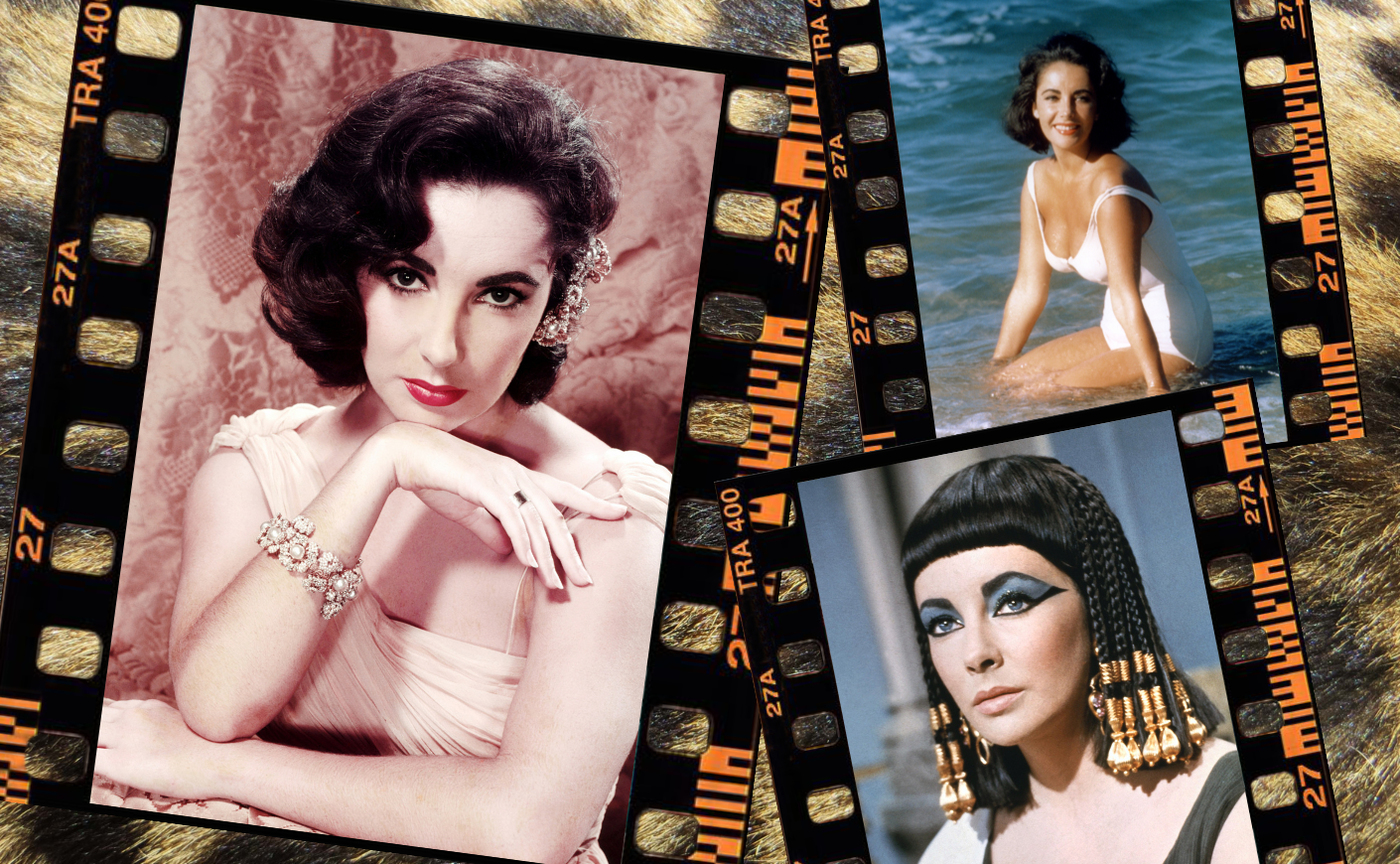It’s been 13 years since Elizabeth Taylor died at 79, but now she’s telling her story in her own words, thanks to never-before-heard recordings that had been collecting dust for decades.
The documentary Elizabeth Taylor: The Lost Tapes, which is streaming on Max, features audio culled from 40 hours of interviews Taylor did in 1964 and 1965 with journalist Richard Meryman, who himself died in 2015.
“[The tapes] were in his attic, and after he died, his wife discovered them,” Nanette Burstein, the documentary’s director, tells Katie Couric Media. Meryman’s widow was unaware that the tapes belonged to Taylor, and in 2019 they were reclaimed by the House of Taylor, which then decided to use the audio to make a film.
Burstein already had plenty of experience telling the stories of larger-than-life figures. She’s the director behind Hillary, the dishy four-part docuseries about Hillary Clinton; and The Kid Stays in the Picture, the 2002 film about Hollywood producer Robert Evans. As she considered taking on the Taylor project, her first task was to see what kind of material she had on her hands.
“I was on vacation, and I was listening to the tapes as I walked around on the beach,” she recalls. “It’s fun, but it’s also a little terrifying because you’re like, is there actually going to be good stuff in here? Not all 40 hours are all that interesting. It’s about looking for the diamonds in the rough — and fortunately, there were many.”
We talked through a handful of those fascinating discoveries with Burstein, including what really went down in one of Taylor’s most notorious marriages, her experiences with co-stars whose lives ended in tragedy, and a record-breaking payday.
Her childhood was a dichotomy of on-screen sexualization and off-screen innocence
Though Taylor would eventually become a tabloid fixture known as much for her romantic life as for her work, in her early career, she was placed in films that explored themes beyond her years. As a teenager, she played the love interest of actors decades older than her, and she did so with little life experience to back up her performance. For example, Taylor admits in The Lost Tapes that her first on-screen kiss (in 1947’s Cynthia) happened a week before her first real-life kiss — and she thought the one in the movie was better.
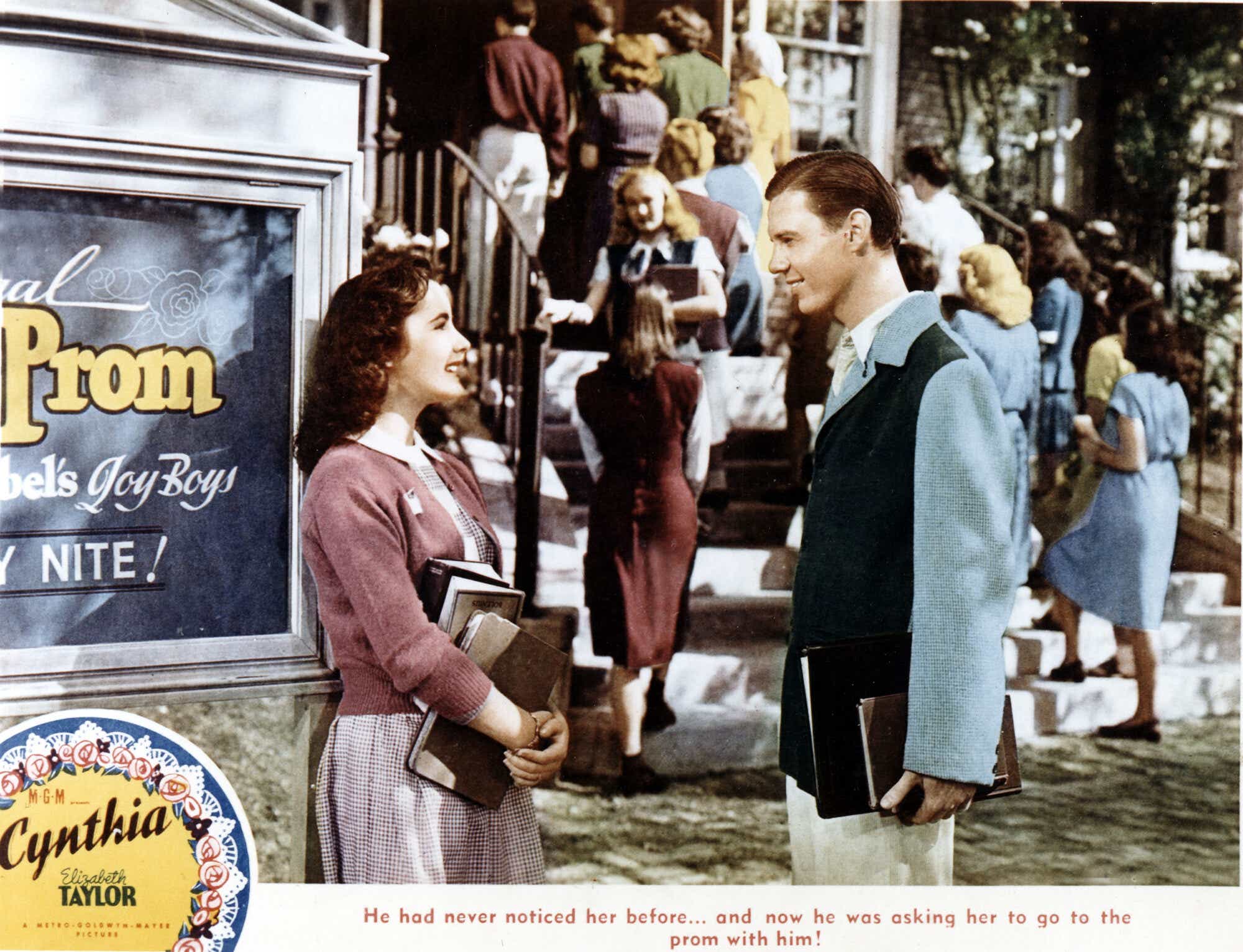
“She was oversexualized as a teenager, and yet she had no understanding of it because her life was so protected,” Burstein says, pointing out that back then, Taylor was always accompanied by her mother or a tutor on set. “She’s playing roles where she’s in love, so she has this idealized notion of love. She’s in love with love, but it’s a foreign concept, except that she’s been romanticizing it in the movies.”
This dynamic played out in her “disastrous” relationship with Conrad Hilton Jr. (known as Nicky), whom Taylor married in 1950 when she was only 18 — and a virgin. “Not only was she unprepared to get married because she barely knew him,” Burstein says, “but he turned out to be a raging alcoholic, which she didn’t realize until they were married.”
She saw both Rock Hudson and James Dean on the days of their tragic deaths
The 1956 Western Giant found Taylor working alongside Rock Hudson, the closeted actor who would become one of her closest friends — and who represented a pattern that would develop in Taylor’s life.
“Elizabeth often played the romantic lead of closeted gay guys in Hollywood, and they became best friends,” Burstein says. (Other examples include Roddy McDowall, her co-star in 1943’s Lassie Come Home, and Montgomery Clift, whom she met on 1951’s A Place in the Sun.) “When they were making Giant, Rock was in a sham marriage, and he confided in [Taylor] about how he really felt, and that became a lifelong friendship.”
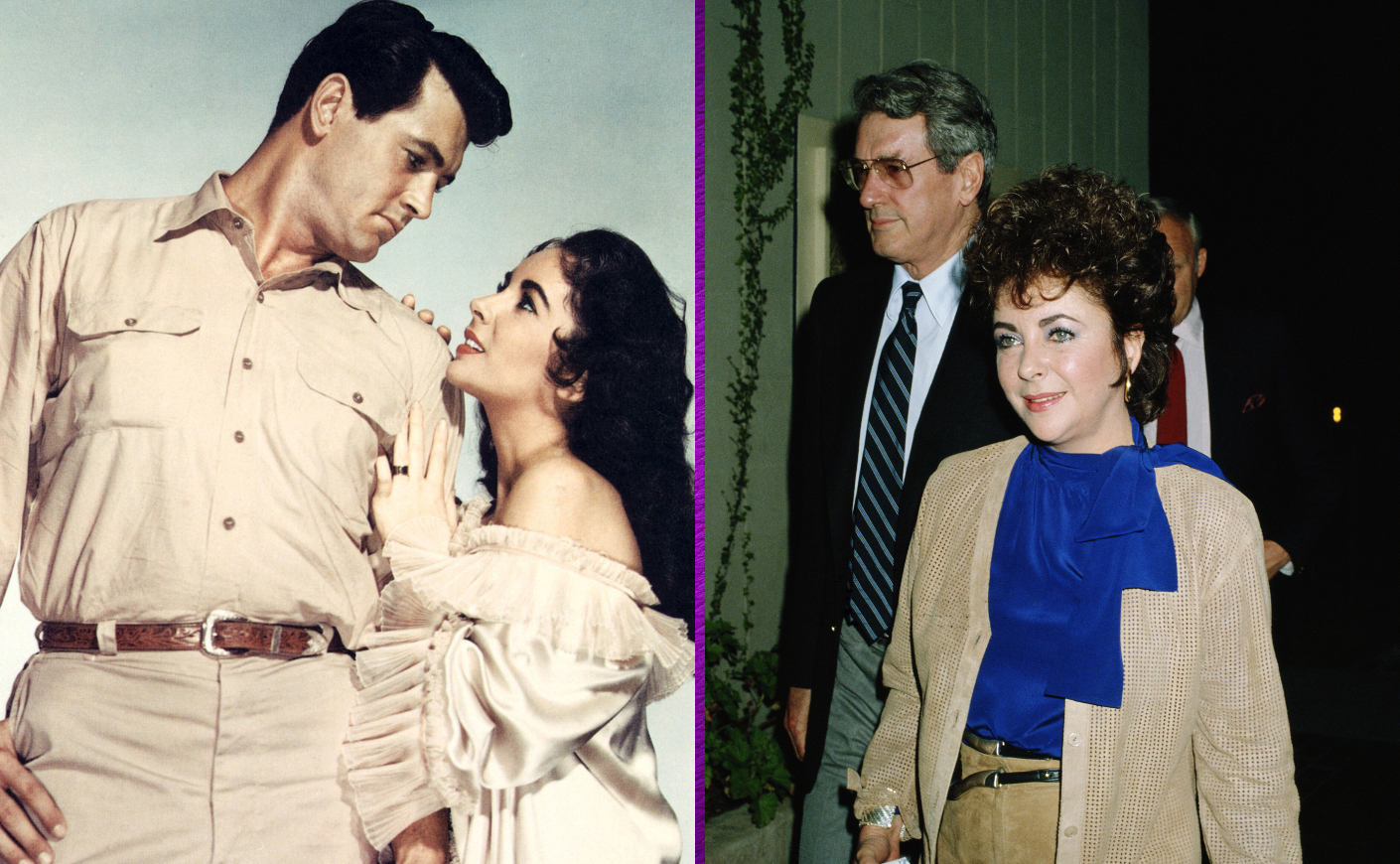
Hudson later contracted HIV, which ultimately led to his death in 1985. His suffering was one reason she became such a prominent activist in the fight against HIV and AIDS.
“She was already committed, even prior to that happening, to raising money for AIDS, and she was shocked at the complacency and fear, even in Hollywood, which is generally a more progressive place. Nobody wanted to talk about this horrible disease, and she made it her cause célèbre,” Burstein says.
Taylor actually saw Hudson on his final day, when she snuck into the hospital to visit him on his deathbed. But he wasn’t the only Giant co-star whose passing she experienced viscerally. She also saw James Dean on the fateful 1955 day when he was killed in a car crash at age 24.
Burstein agrees that it’s a “strange coincidence” that Taylor was with both of her Giant co-stars on the days they died, but it’s also in keeping with a theme that runs through her biography.
“Elizabeth saw a lot of tragedy happen in her life in general,” she explains. “From her husband Mike Todd dying in a plane crash to various health problems that she had to Montgomery Clift getting into a horrible accident after he left a dinner party at her house, she suffered from a lot of trauma.”
The start of Elizabeth Taylor’s relationship with Eddie Fisher (who was still married to Debbie Reynolds) was more complicated than it was portrayed
In February 1957, Taylor married producer Mike Todd, with whom she had a daughter, Liza. One year later, Todd was killed in a plane crash, leaving Taylor “absolutely devastated,” Burstein says. She shared that grief with actor Eddie Fisher, Todd’s dear friend, and their connection eventually led to Fisher’s split from wife Debbie Reynolds. The tabloid coverage intensified when Fisher and Taylor married on the same day his divorce from Reynolds was finalized.
Taylor was portrayed in the press as a homewrecker, but the truth was she hadn’t intended to become romantic with Fisher — and she regretted it as soon as it happened.
“She was looking for an emotional crutch, and she’s very honest in these tapes that Eddie became the crutch she needed,” Burstein says. “She realized that it was an entirely regrettable situation, she should not be with him, and she didn’t want to marry him, but she didn’t know how to get out of it at that point. It played out in the public sphere, and it was humiliating for everyone involved.”

Burstein compares the situation to a memorable tabloid saga of the early 2000s — “it’s like the Brangelina scandal,” she says. But Taylor’s relationship with Fisher would actually get even worse from there.
“Because she’s not in love with Eddie, and then she meets Richard Burton and falls in love and has this very public affair with him, her relationship with Eddie becomes very dark,” Burstein tells us. “There’s an anecdote in [The Lost Tapes] of him pulling a gun out while she’s trying to sleep at night and saying, ‘Don’t worry, I’m not going to shoot you. You’re much too pretty’ — basically threatening her life, scaring her, and clearly being abusive.”
She didn’t enjoy fame
Taylor is undoubtedly one of the most iconic celebrities of the 20th century, but her legions of fans were much more enamored with her than she was interested in being a celebrity. In The Lost Tapes, Taylor confesses that part of her regretted ever becoming “a public utility.”
“She appreciated being an actress, and she lived large, but fame had always been the bane of her existence. It was the thing that tortured her,” Burstein says.

Taylor’s work in Hollywood led to wealth and awards, but it also came with a complicated public image that cast her as a diva or a homewrecker — and motivated photographers to chase her in hopes of documenting her every move.
“She couldn’t go anywhere without giant crews of paparazzi following her, to the point where it felt dangerous, and her face was splashed across magazine covers with really salacious and quite negative subtitles,” Burstein explains. “I really think she disliked her fame and often saw it as infamy more than fame.”
Elizabeth Taylor won her first Oscar for a movie she didn’t like
Taylor won two Academy Awards in her lifetime: one for 1960’s BUtterfield 8, and another for 1966’s Who’s Afraid of Virginia Woolf? She was not, however, a fan of the film that earned her that first trophy. She didn’t like the script, nor did she appreciate its parallels to her personal life, but she had no choice in the matter, thanks to her contract with the powerful studio MGM.
“The studio forces her to play this role. Not only is she a prostitute, but she has a friendship with this guy, played by Eddie Fisher, who’s clearly in love with her. But he has a girlfriend, and his girlfriend is cast to look exactly like Debbie Reynolds,” Burstein says. “They basically took the most negative ideas about [Taylor’s] public life and made her play it out on screen.”
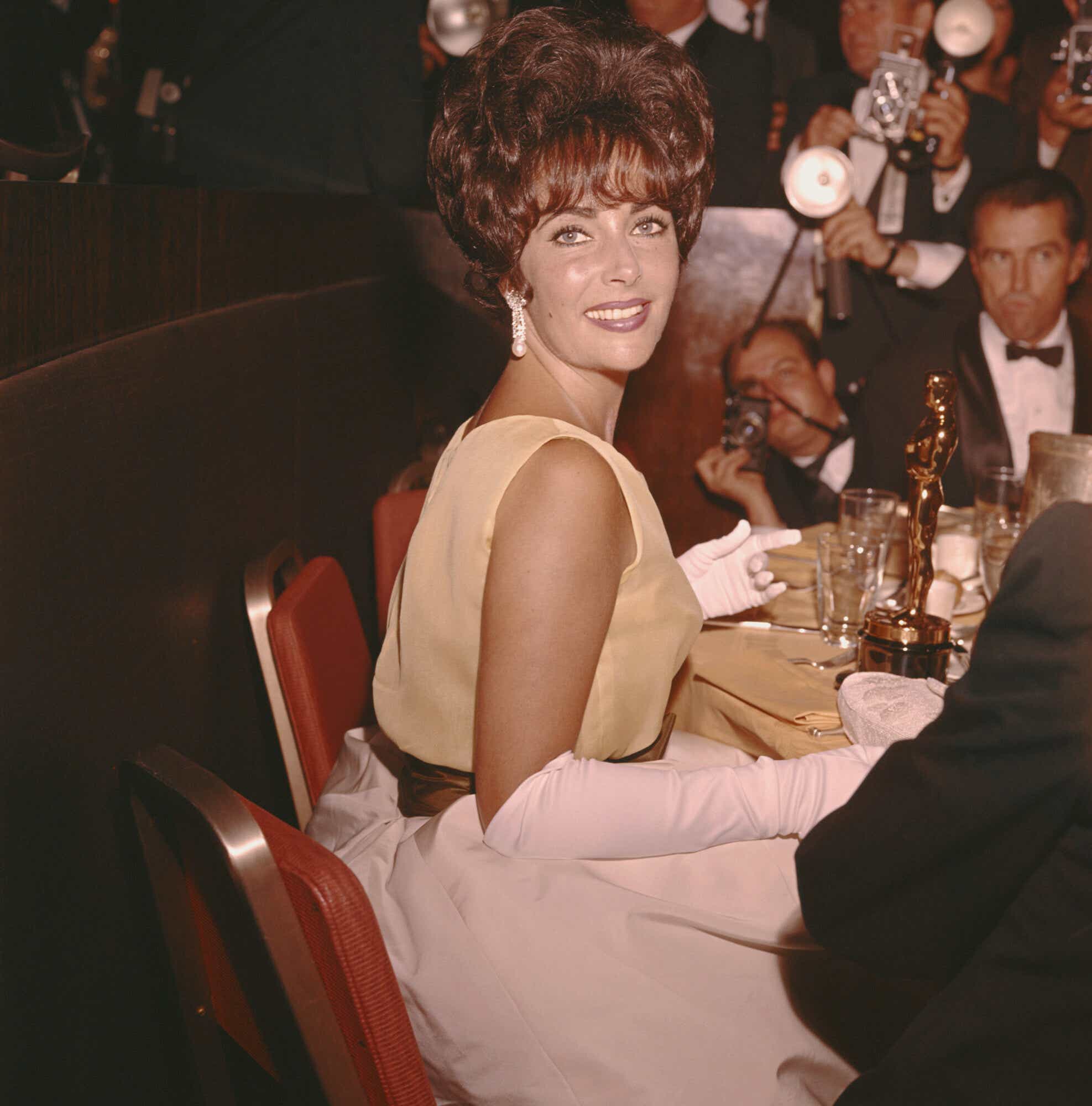
Burstein adds that while she thinks BUtterfield 8 is a solid film (and that Taylor’s performance in it is good), she understands why the actress disliked it: “She really resented the fact that they made her play something that reflected her personal life, and they cast her husband in it. That was insane. Then she wins the Oscar for it, and she’s like, ‘Oh, great. I win the Oscar for being the biggest slut of the day.’”
She was the first actor — male or female — to earn $1 million for a single movie
She was paid this astronomical salary for the historical epic Cleopatra, which began production in 1960. (Adjusted for inflation, that $1 million is more like $10 million today, further underscoring the significance of this payday.)
Though it became one of her most memorable roles, Taylor originally did not want to do Cleopatra. In fact, her colossal fee was the result of a negotiation tactic: Reportedly on the advice of Burt Reynolds, Taylor told producers she’d only shoot the movie for $1 million, assuming they’d balk at the request and cast someone else.
“She was a good businesswoman,” Burstein says. “She had the balls, as a woman, to ask for that kind of salary, and they gave it to her because despite her infamy, or maybe because of it, she sold tickets. People wanted to see her on screen.”
For Taylor, Cleopatra brought the spoils of not only money but also love. The picture introduced her to Richard Burton, whom she would marry in 1964, divorce in 1974, and remarry in 1975 before divorcing a second time less than a year later. (It’s worth noting that both Burton and Taylor were married to other people upon their first meeting.)
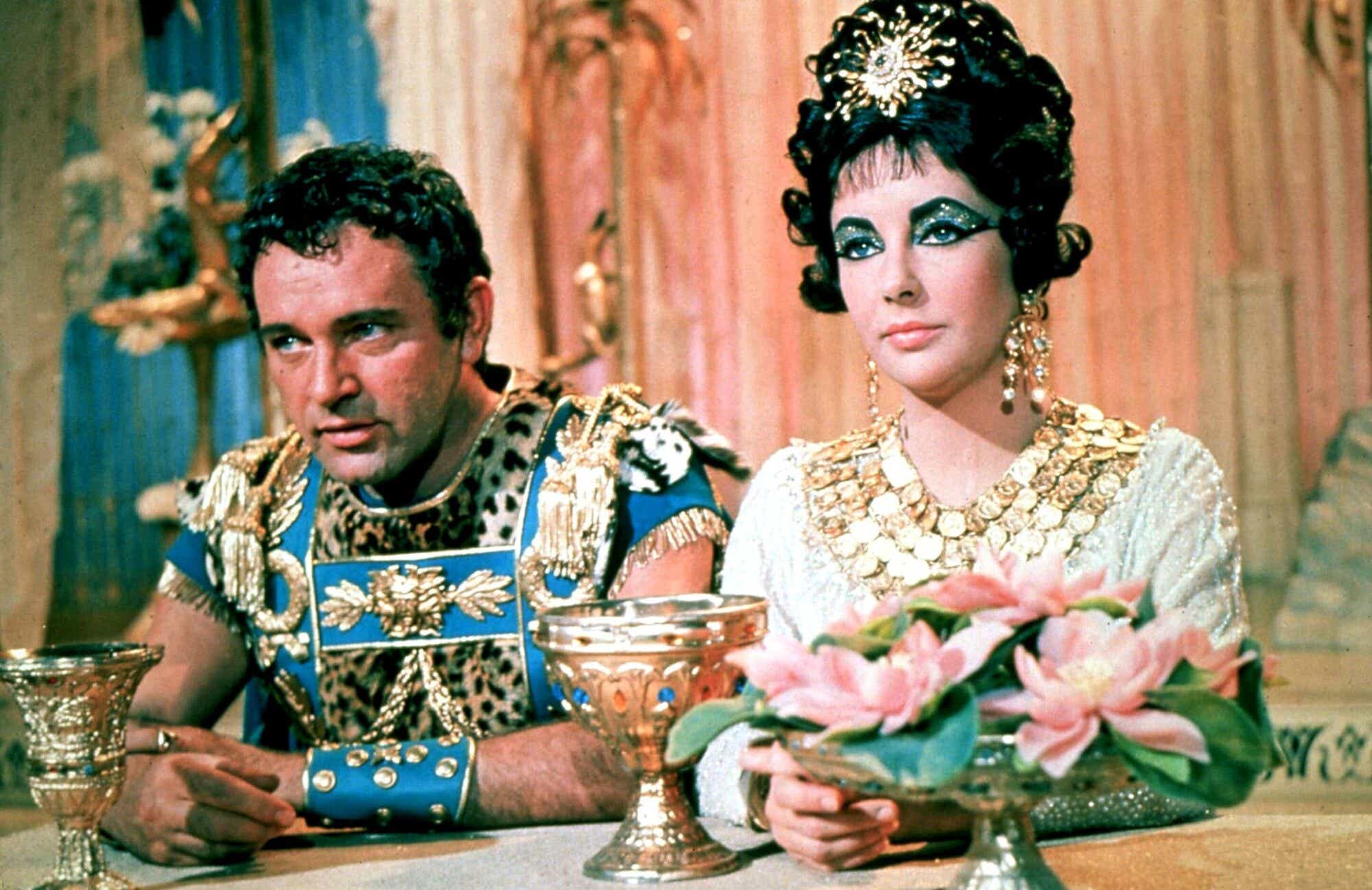
The Liz and Dick love story has been told many times, but Burstein says the forgotten audio used in The Lost Tapes — and footage of the couple together — highlights exactly how public their relationship was from the very beginning.
“Paparazzi was a relatively new thing. Prior to that, stars had been protected by the studios, and there was control between the studios and the press. Then that disappeared because the whole Hollywood system had changed,” Burstein says. “So you have these two stars having an affair while this very widely watched movie is being made.”
All in all, the hubbub around Cleopatra is an excellent example of the magic that made Taylor an icon, Burstein says: “She was very talented. She got many Oscar nominations and two Oscar wins by the end of her career. She was also stunningly beautiful. Women admired her. Men wanted to date her. She had many of the attributes to be a Hollywood star.”







